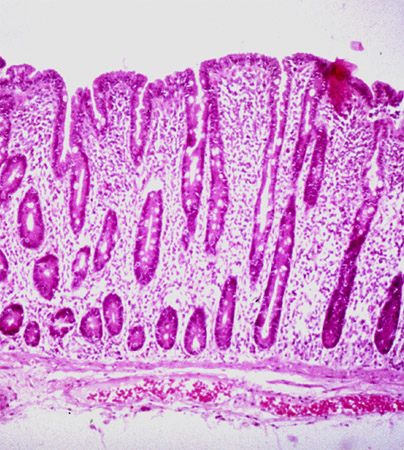Summary
Differentials
Common
- Chronic pancreatitis
- Celiac disease
Uncommon
- Giardiasis
- Whipple disease
- HIV/AIDS
- Head of the pancreas cancer
- Lymphoma
- Gastrointestinal amyloidosis
- Medication-induced malabsorption
- Hyperthyroidism
- Bacterial overgrowth
- Crohn disease
- Resection of stomach, pancreas, or small bowel
- Primary biliary cholangitis
- Primary sclerosing cholangitis
Contributors
Authors
Laura S. Chiu, MD, MPH
Assistant Professor of Medicine
Gastroenterology Division
Department of Medicine
Boston Medical Center, Boston University School of Medicine
Boston
MA
Disclosures
LSC declares that she has no competing interests.
Alan C. Moss, MD
Professor of Medicine
Boston University
Boston
MA
Disclosures
ACM declares that he has no competing interests.
Peer reviewers
Peter R. Holt, MD, FACP
Professor of Medicine (Emeritus)
Columbia University
Senior Research Associate
Rockefeller University
New York
NY
Disclosures
PRH declares that he has no competing interests.
Senthilkumar Sankararaman, MD
Assistant Professor
Department of Pediatrics, Pediatric Gastroenterology
UH Rainbow Babies & Children's Hospital
Cleveland
OH
Disclosures
SS declares that he has no competing interests.
Raffaele Pezzilli, MD
Chief of the Pancreas Unit
Department of Internal Medicine and Gastroenterology
Sant’ Orsola-Malpighi Hospital
Bologna
Italy
Disclosures
RP declares that he has no competing interests.
Peer reviewer acknowledgements
BMJ Best Practice topics are updated on a rolling basis in line with developments in evidence and guidance. The peer reviewers listed here have reviewed the content at least once during the history of the topic.
Disclosures
Peer reviewer affiliations and disclosures pertain to the time of the review.
References
Key articles
Conwell DL, Lee LS, Yadav D, et al. American Pancreatic Association practice guidelines in chronic pancreatitis: evidence-based report on diagnostic guidelines. Pancreas. 2014 Nov;43(8):1143-62.Full text Abstract
Rubio-Tapia A, Hill ID, Semrad C, et al. American College of Gastroenterology guidelines update: diagnosis and management of celiac disease. Am J Gastroenterol. 2023 Jan 1;118(1):59-76.Full text Abstract
Phillips ME, Hopper AD, Leeds JS, et al. Consensus for the management of pancreatic exocrine insufficiency: UK practical guidelines. BMJ Open Gastroenterol. 2021 Jun;8(1):e000643.Full text Abstract
Gardner TB, Adler DG, Forsmark CE, et al. ACG clinical quideline: chronic pancreatitis. Am J Gastroenterol. 2020 Mar:115(3):322-39.Full text Abstract
Reference articles
A full list of sources referenced in this topic is available to users with access to all of BMJ Best Practice.
Use of this content is subject to our disclaimer

